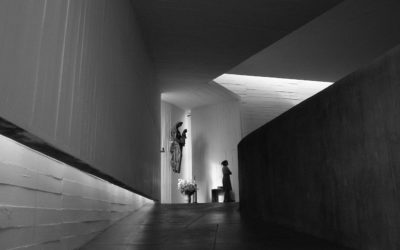The current health crisis has uncovered a series of flaws in the organizational structures of public and private institutions in various countries around the world, and not only those of the health sector. It has also shown that many times city buildings are at the service of vehicles or concrete itself, forgetting green areas and the quality of life of people.
All this, added to the way in which people have been living before the confinement experience, has resulted in the urgent formulation of profound changes in the organization of cities, in order to face future pandemics, but above all to counteract the climate crisis that affects the entire planet and that can even encourage the spread of this and other pandemics.
Various studies such as that of Harvard University or the New England Journal (United States) indicate that there is an increase in mortality from COVID-19 after exposure to particles (pollutants) in suspension such as PM10 and PM2.5. While the Martin Luther University of Halle-Wittenberg (Germany) indicates that high levels of nitrogen dioxide in the air may be associated with the increase in deaths from COVID-19.
These and other alarming data should prompt governments to generate drastic measures to reduce environmental pollution. Already during the quarantine period, many countries have seen a decrease in pollution levels, mainly due to the decrease in transport and the absence of tourism. These events led to the creation of favorable environments -many times- for the return of natural life (flora and fauna) to their habitat, and people (the few times we had to go out) breathed a purer air … and not only in the countryside, but in the cities.
But what has been happening in many countries that have already returned to the so-called “New Normal” if they have not returned to a new stage of confinement? What has happened – in many cases – is that it has returned to worrying levels of contamination and that has a lot to do with people’s behavior. That is why documents or requests such as “The Manifesto for the reorganization of the city after COVID-19” are one of those social initiatives that make a difference.
The text written by Massimo Paolini, theorist of architecture and member of POLLEN (Political Ecology Network organization that houses researchers, groups, projects, networks and nodes of political ecology around the world) is addressed to Ada Colau, Mayor of Barcelona and expresses a concern for the future of that city in the post-COVID19 period. And it has among its signers great personalities of Spanish-European social thought such as the anthropologist Manuel Delgado, the philosopher and essayist Jorge Riechmann, the economist Alberto Acosta, the sociologist and writer Saskia Sassen, among many other thinkers from around the world.
All of them demand the realization of structural changes in the organization of cities (in this case Barcelona) through measures, many of them in an urban-architectural sense, to promote the quality of life over economic interests and the defense of the environment, to be thus prepared in the event of pandemics similar to the one we are experiencing in the near future (or not). To this end, the request has been divided into four objectives: reorganization of mobility, (re) naturalization of the city, de-commodification of housing and urban decline (the most controversial part of the document, due to the implications it would bring to tourism).
1) Reorganization of mobility.- Whose demands are focused on:
– Reduce the use of private cars and motorcycles in the city.
– Focus urban mobility on the bicycle.
– Promote a highly efficient and non-polluting public transport network.
– Implement temporary measures to be able to maintain physical distance (minimum 2 meters), maintaining sidewalks for people and lanes for bicycles; and after the temporary measures, gradually pedestrianize the city.
– Among other.
2) (Re) naturalization of the city. – Whose demands focus on:
– Increase the area devoted to urban green (parks, green areas) and reduce the amount of asphalt.
– Reduce light pollution in the city.
– Promote biodiversity, both plant and animal, creating urban ecosystems.
– Promote the creation of drinking water sources throughout the city.
– Among other.
3) De-commodification of housing.- Whose demands focus on:
– Guarantee that each person, without exclusion, can have a house in a short time.
– Reduce the number of homes dedicated to tourism.
– Ensure that each older person can continue to live at home.
– Among other.
4) Urban decline.- Whose demands are focused on:
– Promote tourism decrease.
– Promote the reduction of energy consumption in buildings.
– Maintain the current dimensions of the airport.
– Among other.
As you can read, in general they are measures that can be (re) formulated in different realities taking into account the idiosyncrasies of populations, but in the end all seek as a central objective to be prepared not only individually, but -above all- collectively for situations extraordinary like the ones we live today. You can read (and sign) the full manifest at: https://manifiesto.perspectivasanomalas.org/manifiesto-2/
Sources:
EURONEWS: Air pollution exacerbates mortality from Covid-19
EL PAÍS: For a less commercialized and more humane Barcelona
MANIFESTO: Manifesto for the reorganization of the city






0 Comments